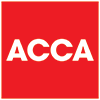Corporation Tax updated…
After numerous policy changes in the second half of 2022, it seems a good time for a reminder that the main rate of Corporation Tax will rise from 19% to 25% from 1st April 2023, for companies with profits of £250,000 and over. Companies with profits up to £50,000 will continue to pay Corporation Tax at 19%, with profits between the two limits being subject to a tapered rate.
The Background
The April 2023 Corporation Tax rise was first announced by the then-Chancellor of the Exchequer, Rishi Sunak, in March 2021 during his Spring Budget.
At the time, the Government’s fiscal policy had been to reduce the annual deficit and deliver “sustainable public finances” after Sunak signed off on £400 billion more spending than planned in 2020, predominantly in pandemic support measures..
The Treasury estimated the changes to Corporation Tax would increase tax income by an additional £17.2bn a year by 2025/26.
However, after Boris Johnson resigned as Prime Minister in July 2022 and was replaced by Liz Truss, the Government’s approach to fiscal policy changed radically.
Kwasi Kwarteng, having taken up the mantle of Chancellor, delivered his ‘mini Budget’ on 23rd September, where he announced a range of tax cuts and cancelled the planned increase in Corporation Tax.
Following a strong negative market backlash to the mini-Budget, the Government was forced into a U-turn, with Liz Truss confirming on 14th October the Corporation Tax rise would in fact go ahead as planned.
In documents accompanying the Autumn Statement by Jeremy Hunt, named as Chancellor after Kwarteng, the Treasury upgraded its estimate of the value of the tax rise to £17.9bn per annum by 2026/27.
Despite the increase, the UK will remain the country with the lowest effective corporation tax rate in the G7.
New rates & thresholds
As mentioned above, the Corporation Tax increase will be applied on profits exceeding £250,000 a year, which, according to Spring Budget 2021 documents, means around 10% of all UK companies will pay the full higher rate.
The Government will also establish a ‘small profits rate’, which will hold Corporation Tax at 19% for companies with profits of £50,000 or less. According to officials, 70% of actively trading companies – 1.4 million businesses – will therefore be unaffected by the increase.
If you have a profit of £300,000, all of it will be taxed at 25%, not just the amount above £250,000. This is not a tax free allowance or tax banding, as we are used to with income tax, for example, where portions of your income are taxed at gradually increasing rates after a tax-free allowance.
For profits between £50,000 and £250,000, the Government will introduce a taper to limit the increased tax burden on medium-sized companies.
The theory of how the taper will work…
This is quite complicated, so we’ll explain it in full, and then translate it all for you too!
If a company’s profits after 1st April 2023 are between £50,000 (lower limit) and £250,000 (upper limit), they can claim marginal relief, which will effectively apply the ‘taper’ to bring their Corporation Tax rate to the correct point on the sliding scale between 19% and 25%.
There are factors that will influence the lower and upper limits, which include the length of your accounting period and the number of associated companies your company has.
- If your accounting period is less than 12 months, the limits will reduce proportionately.
- If the company has associates companies, the limits will reduce accordingly. So, if your company has three other associated companies, the limits of £50,000 and £250,000 are divided by four, reducing the lower limit to £12,500 and the upper limit to £62,500.
These considerations give you the ‘adjusted limits’ from which your Corporation Tax rates will be calculated.
The Marginal Relief Formula
Companies will be able to work out the amount of tax they pay with the following formula, developed by the Government. The different elements within the calculation are explained in the paragraphs below.
(Adjusted upper limit – Augmented Profits) x (Taxable Total Profit ÷ Augmented Profits) x (Standard Marginal Relief Fraction).
To use the online Marginal Relief for Corporation Tax Calculator, you need to know your accounting period start and end dates, total taxable profits for the period, and distributions from non-group, unassociated companies and details of any associated companies.
What are Augmented Profits?
Augmented Profits are ‘taxable total profits’ added to any exempt dividends received from non-group companies. It is the Augmented Profits that determine the rate of tax that’s applicable to the company, but the amount payable is calculated on the Taxable Total Profit figure.
What are Associated Companies?
The definition of Associated Companies is changing at the same time as the Corporation Tax rules are changing, so it’s important to be aware of the new requirements. These are for business owners to assess whether there is ‘substantial commercial interdependence’ between companies. If there is, the companies are deemed to be associated.
The context until now has been whether the companies were ‘under common control’ which could give a very different outcome.
An example
If a husband and wife both operate separate companies, without either owning shares or being a Director or Officer in the other, historically they would not have been considered as Associated Companies. Under the new rules, if they share business premises, that one could not maintain without the other, they would be deemed to be Associated as there is ‘commercial interdependence’.
We’ll come back to this in a separate post!
What is the Standard Marginal Relief Fraction?
In the above equation, created by the Government, the marginal relief fraction is 3/200ths, which is the difference between the main rate and the marginal rate expressed as a fraction.
To explain where this fraction comes from, the Government says:
- Corporation tax payable on the upper limit = £62,500 (because £250,000 x 25% = £62,500).
- Corporation tax payable on the lower limit = £9,500 (because £50,000 x 19% = £9,500).
- The tax payable difference between the limits is, therefore, £53,000.
- Dividing £53,000 by £200,000 (the difference between the upper and lower limit) provides the marginal rate of 26.5%.
- The difference between the marginal rate of 26.5% and the main rate of 25% is 1.5%, which can also be expressed as 3/200.
The Translation!
We did warn you that this is a completed subject!
As always, we want to translate any complex legislation, so here’s our best translation, based on how this will apply to the majority of our clients.
Whilst we said above that the new Corporation Tax regime isn’t operating within bandings, it is possible to calculate a Company’s Corporation Tax liability based on percentages, as long as you take account of a very particular caveat:
- The first £50,000 of profits are charged at 19%.
- Subsequent amounts up to £200,000 are charged at £26.5%.
- Amounts earned in profits beyond the £250,000 are charged at 25%.
The Caveat
This method assumes that the company receives NO dividend income and that it is not part of a group, and has NO Associated Companies, under the new rules.
Mitigating Corporation Tax
It would be remiss of us not to take this opportunity to remind you of ways to reduce your Corporation Tax liability if you can.
Our Year End Tax Guide includes some suggestions around Corporation Tax that you may be able to explore before the end of this financial year, and there are some suggestions below that you may wish to consider for the year ahead:
- The annual investment allowance will remain at its highest ever permanent level of £1 million from 1st April 2023.
- The R&D expenditure credit (RDEC) will increase from 13% to 20% to give more tax money back for innovative projects.
- However, the SME additional deduction will be cut from 130% to 86% from 1st April, and the SME credit will decrease from 14.5% to 10%, to ‘improve the competitiveness of the RDEC scheme’.
- There are also several tax reliefs available for creative industries, including video games tax relief, film tax relief and various television reliefs.
- The Government promised in the Autumn 2022 Statement to ‘build upon the success of the audio-visual subset of the creative industry tax reliefs” to “further incentivise the production of culturally British content’, so there may be announcements in the Spring Budget that could be helpful.
Part of our role as your Accountant is to translate new legislation, but the calculation of a Company’s Corporation Tax liability is part of the process we complete when we prepare end of year Accounts and the Corporation Tax Return. We can of course also let you have estimated liability figures during the year so you can plan along the way, but the bottom line is that business owners need to have an understanding of this calculation rather than be able to complete and explain it! Don’t worry if it still feels daunting!
As always, if you’re unsure of any aspect of the new Corporation Tax structure, the easiest way to understand it may be for us to have a chat! We can then apply our understanding of your business to the legislation, and explain the practical impact this will have on you and andy future liability, rather than at a theoretical level. Get in touch if this would be helpful!
Business News
We send regular updates that keep clients aware of changes and suggestions on a wide range of subjects; if you’d like to receive those too, just add your details below and we’ll do the rest! We promise not to bombard you and you can unsubscribe at any time.


